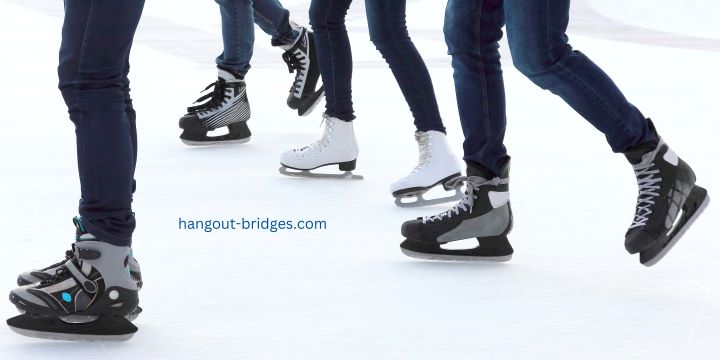Key Takeaways:
- Synthetic ice provides a cost-effective, convenient alternative to traditional ice rinks.
- It allows for year-round skating regardless of weather conditions.
- The versatility of installation and use makes synthetic ice suitable for various settings.
- Maintenance and performance considerations are essential for maximizing the rink’s potential.
Introduction to Synthetic Ice
Synthetic ice is a revolutionary alternative to traditional ice rinks, offering the same skating experience without the need for constant freezing temperatures or large amounts of water. These artificial surfaces, made from durable plastic polymers, have evolved significantly since their inception, becoming increasingly realistic and widely accepted for recreational and professional use. With technological advances, modern synthetic ice products offer enhanced glide, reduced friction, and resilience, giving skaters a near-authentic experience.
No longer limited by climate or season, you can now enjoy skating activities year-round, whether it’s for recreation or rigorous athletic training. This breakthrough makes synthetic ice a perfect solution for those living in regions with warmer climates or areas that experience significant seasonal variations.
Year-Round Accessibility
One of the most compelling benefits of synthetic ice is its year-round accessibility. Unlike traditional ice rinks, which depend on colder weather, synthetic ice can be used at any time of the year, making it perfect for regions with warmer climates or off-season training. Consistent access to an ice surface can be crucial for athletes, particularly skaters and hockey players, who require regular practice to maintain and improve their skills. This constant availability ensures that seasonal changes or unexpected weather conditions never disrupt training schedules. One of the significant advantages of synthetic ice is its versatility and availability.
For recreational skaters, the ability to skate any time of the year adds significant enjoyment and convenience. Families can plan skating activities without worrying about ice rink schedules or outdoor temperature fluctuations. Synthetic ice rinks in community centers and residential areas provide a continuous opportunity for fun and engagement, contributing to an active and healthy lifestyle.
Cost-Effective Solution
Investing in a synthetic ice rink can be more cost-effective in the long run than maintaining a traditional one. The initial setup costs may appear significant, but the long-term savings on energy and maintenance quickly offset these expenses. There are no hefty energy bills from refrigeration systems, and the ongoing maintenance costs are significantly lower. For example, synthetic ice doesn’t require water for resurfacing, which is both cost-saving and environmentally friendly. Additionally, the artificial surface doesn’t melt, eliminating the need for air conditioning systems and dehumidifiers essential in traditional ice rinks.
Furthermore, synthetic ice rinks are durable and can withstand heavy usage over extended periods, reducing costs associated with frequent repairs or refurbishments. Their longevity means that once installed, the rink can serve a community or a household for many years with minimal upkeep. This long-term financial efficiency makes synthetic ice an appealing option for schools, sports clubs, and recreational facilities on tight budgets.
Installation and Versatility
Synthetic ice rinks can be installed in various settings, such as backyards, basements, community centers, and even commercial spaces. The installation process is straightforward and can usually be completed without requiring specialized tools or professional assistance. Most synthetic ice panels are designed to interlock seamlessly, allowing quick assembly and disassembly. This modular design means that rinks can be customized to fit various spaces, from small practice areas to full-sized rinks.
The versatility of synthetic ice extends beyond installation sites. It can be used for various activities, including figure skating, hockey, and recreational skating. Its adaptability makes it an excellent choice for multi-use facilities offering diversified sports and recreational options. For example, a community center can set up a synthetic ice rink during winter festivities and quickly transition the space back to its original use afterward.
Environmental Impact
From an ecological standpoint, synthetic ice rinks offer several benefits. These rinks significantly reduce energy consumption and the environmental footprint associated with ice maintenance by eliminating the need for constant refrigeration and water. According to experts, this makes synthetic ice a greener alternative. Traditional ice rinks require massive amounts of electricity to maintain the frozen surface and to control the indoor climate, contributing to higher carbon emissions.
Additionally, synthetic ice is often made from recyclable materials, further enhancing its sustainability. By choosing synthetic ice, facilities can reduce their reliance on harmful chemicals used in traditional ice maintenance practices, such as glycol-based refrigerants. This environmentally conscious approach benefits the planet while providing a high-quality skating experience.
Maintenance and Longevity
Maintaining a synthetic ice rink involves simple cleaning routines to keep the surface debris-free. Regular sweeping and occasional wet cleaning with a mild detergent is usually sufficient. Unlike traditional ice, which requires frequent resurfacing and temperature management, synthetic ice demands little upkeep. Proper maintenance ensures that the surface remains smooth and safe for skating, potentially extending the rink’s life for many years.
When cared for correctly, synthetic ice can retain high performance and resist wear and tear, providing a long-lasting solution for skating enthusiasts. Facilities and homeowners can enjoy a consistent and reliable skating surface that performs well across various climates and usage scenarios. This durability, combined with low maintenance requirements, underscores the value and practicality of synthetic ice rinks.
Performance and User Experience
Feedback from both professional skaters and recreational users often highlights the similarities between synthetic and natural ice. While slight differences in glide and friction may exist, technological advancements have minimized these disparities. Today’s synthetic ice rinks offer a nearly authentic skating experience, enabling effective practice and enjoyment. Skaters appreciate the reliability and availability of artificial ice, which allows for uninterrupted training and recreational sessions.
A recent article on the environmental benefits of synthetic ice supports this, noting the improvements in material and design that enhance user satisfaction. These enhancements include better glide properties and reduced surface wear, making synthetic ice an attractive option for novices and seasoned skaters. The continuous improvement in synthetic ice technology promises an even closer simulation of natural ice in the future.
Conclusion
In summary, synthetic ice rinks provide a practical, cost-effective, and environmentally friendly alternative to traditional ones. Their year-round accessibility, ease of installation, and reduced maintenance make them an excellent choice for personal and community use. As technology improves, synthetic ice will likely become an even more popular option for skating enthusiasts worldwide. For training, recreation, or competitive sports, synthetic ice offers a durable, reliable, and sustainable solution for enjoying skating activities all year.









